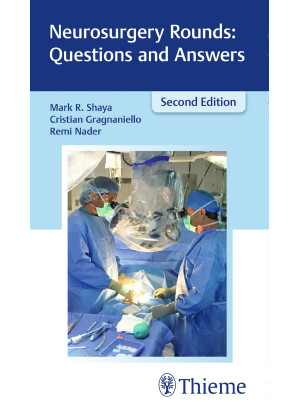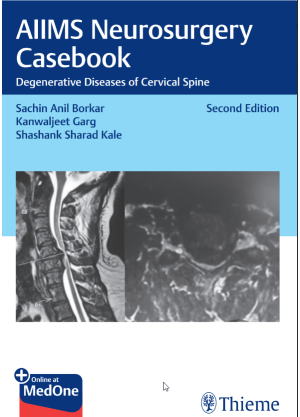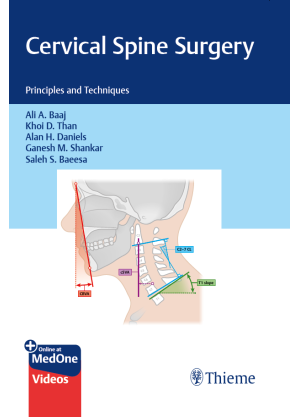The benchmark reference on endoscopic surgery of the orbit from international experts!
The use of endoscopic orbital surgery is rapidly expanding in modern day rhinology and oculoplastic practice. In the past two decades, endoscopic techniques have been adapted for lacrimal and orbital surgery. Significant advances have been made in endoscopic endonasal and periocular approaches to the orbital apex and skull base, especially in the last 3 years. There has been no book dedicated to these recent surgical innovations until Endoscopic Surgery of the Orbit: Anatomy, Pathology, and Management by Benjamin Bleier, Suzanne Freitag, and Raymond Sacks filled this void.
This landmark text and its accompanying videos bring together the global experience of thought leaders and pioneers with multidisciplinary backgrounds. The collective expertise shared throughout 20 chapters codifies the current state of endoscopic orbital surgery and sets the stage for future developments. The opening chapters cover anatomy, physiology, and radiologic aspects pertaining to the orbit, paranasal sinuses, and surrounding structures. Subsequent chapters detail evaluation and endoscopic management of a full spectrum of pathologies utilizing orbital and optic nerve decompression, reconstruction, transorbital approaches, and anesthetic techniques.
Key Features
- State-of-the-art evidence-based medicine including the pros and cons of different treatment approaches
- Management of operative complications such as sinusitis and iatrogenic intraorbital injury, and postoperative challenges
- Pathology-specific topics including congenital and acquired lacrimal obstruction, thyroid-related eye disease, trauma, orbital neoplasms, and skull-base neoplasms with orbital involvement
- 138 original illustrations help elucidate complex anatomy
- High definition, narrated surgical videos delineate specific surgical techniques
This is a must-have resource for otolaryngologists in rhinologic and general practice and ophthalmologists in general and oculoplastic practice. It will also benefit neurosurgeons and plastic & reconstructive surgeons. The comprehensive text, clinical pearls, and accompanying videos facilitate incorporating these techniques into practice, whether one is a surgical trainee or veteran practitioner.
This book includes complimentary access to a digital copy on https://medone.thieme.com.
1 Anatomy of the Orbit and Paranasal Sinuses
2 Anatomy, Physiology, and Treatment of the Tearing Adult
3 Radiologic Assessment of the Orbit and Lacrimal System
4 Evaluation and Management of Congenital Lacrimal Obstruction
5 Evaluation and Management of Acquired Lacrimal Obstruction
6 Pathogenesis of Thyroid Eye Disease
7 Indications and Techniques for Orbital Decompression
8 Complications of Orbital Decompression and Management
9 Strabismus and Eyelid Surgery in Thyroid Eye Disease
10 Orbital Trauma Management, Reconstruction, and External Approaches to the Orbit
11 Optic Nerve Decompression
12 Primary Neoplasms of the Orbit
13 Open Management of Primary Orbital Neoplasms
14 Endoscopic Management of Primary Orbital Neoplasms
15 Endoscopic Management of Skull Base Neoplasms with Orbital Involvement
16 Transorbital Approaches to the Sinuses, Skull Base, and Intracranial Space
17 Orbital Complications of Sinusitis and Management
18 Management of Iatrogenic Orbital Injury
19 Anesthetic Technique for Endoscopic Orbital Surgery
20 Postoperative Care and Complications Following Open and Endoscopic Orbital Surgery
Menu of Accompanying Videos
7.1 Endoscopic Left Orbital Decompression with Preservation of Inferomedial Strut.
11.1 Endoscopic Left Optic Nerve Decompression.
14.1 Endoscopic Resection of Left Zone C Intraconal Cavernous Hemangioma.
14.2 Endoscopic Resection of Left Extraconal Cavernous Hemangioma with Extension into the Pterygopalatine Fossa and Superior Orbital Fissure.
14.3 Combined Transcaruncular and Endoscopic Resection of Right Zone A/B Orbital Schwannoma.
16.1 Examples of Transorbital Neuroendoscopic (TONES) Approaches for a Range of Pathologies.











